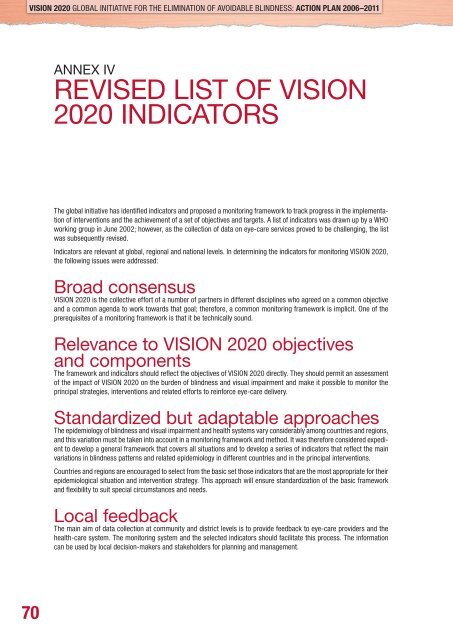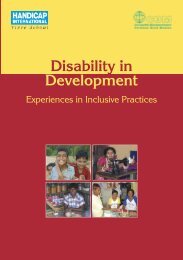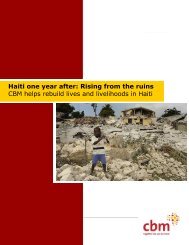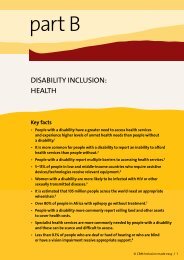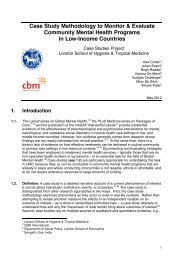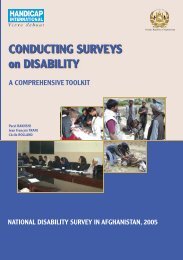Vision 2020 - World Health Organization
Vision 2020 - World Health Organization
Vision 2020 - World Health Organization
Create successful ePaper yourself
Turn your PDF publications into a flip-book with our unique Google optimized e-Paper software.
VISION <strong>2020</strong> GLOBAL INITIATIVE FOR THE ELIMINATION OF AVOIDABLE BLINDNESS: ACTION PLAN 2006–2011<br />
ANNEX IV<br />
REVISED LIST OF VISION<br />
<strong>2020</strong> INDICATORS<br />
The global initiative has identifi ed indicators and proposed a monitoring framework to track progress in the implementation<br />
of interventions and the achievement of a set of objectives and targets. A list of indicators was drawn up by a WHO<br />
working group in June 2002; however, as the collection of data on eye-care services proved to be challenging, the list<br />
was subsequently revised.<br />
Indicators are relevant at global, regional and national levels. In determining the indicators for monitoring VISION <strong>2020</strong>,<br />
the following issues were addressed:<br />
Broad consensus<br />
VISION <strong>2020</strong> is the collective effort of a number of partners in different disciplines who agreed on a common objective<br />
and a common agenda to work towards that goal; therefore, a common monitoring framework is implicit. One of the<br />
prerequisites of a monitoring framework is that it be technically sound.<br />
Relevance to VISION <strong>2020</strong> objectives<br />
and components<br />
The framework and indicators should refl ect the objectives of VISION <strong>2020</strong> directly. They should permit an assessment<br />
of the impact of VISION <strong>2020</strong> on the burden of blindness and visual impairment and make it possible to monitor the<br />
principal strategies, interventions and related efforts to reinforce eye-care delivery.<br />
Standardized but adaptable approaches<br />
The epidemiology of blindness and visual impairment and health systems vary considerably among countries and regions,<br />
and this variation must be taken into account in a monitoring framework and method. It was therefore considered expedient<br />
to develop a general framework that covers all situations and to develop a series of indicators that refl ect the main<br />
variations in blindness patterns and related epidemiology in different countries and in the principal interventions.<br />
Countries and regions are encouraged to select from the basic set those indicators that are the most appropriate for their<br />
epidemiological situation and intervention strategy. This approach will ensure standardization of the basic framework<br />
and fl exibility to suit special circumstances and needs.<br />
Local feedback<br />
The main aim of data collection at community and district levels is to provide feedback to eye-care providers and the<br />
health-care system. The monitoring system and the selected indicators should facilitate this process. The information<br />
can be used by local decision-makers and stakeholders for planning and management.<br />
70


